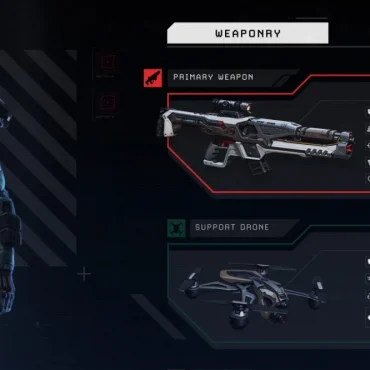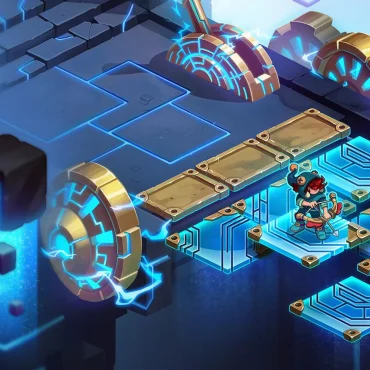Employee training in high-risk industries like construction, healthcare, oil & gas, and energy has traditionally been costly, time-consuming, and fraught with risks. The complexity and danger of using hazardous equipment only heighten these challenges. However, Mixed Reality (AR & VR) training solutions are revolutionizing this landscape. This article delves into the transformative benefits of VR training and showcases real-world implementations across various sectors, illustrating how virtual reality is setting new standards in employee training.
How VR training works
VR training immerses employees in a fully interactive, 360-degree virtual environment through the use of headsets and controllers. This technology replicates real-world conditions, allowing trainees to engage with realistic scenarios and objects safely and effectively. Whether practicing ball handling as a Quarterback or mastering intricate machinery operations as a gas appliance inspector, VR training provides a versatile, risk-free platform for comprehensive skill development.
Benefits of Virtual Reality employee training
Employee training methods have remained stagnant for years, making the advent of AR & VR training solutions a groundbreaking development. Here’s why virtual reality training stands out as an exceptional learning tool:
Real-world experience
Virtual reality training programs excel in recreating real-life situations, offering identical working conditions and replicating the functionality of all equipment and machinery. This immersive, realistic environment allows employees to practice tasks and refine their skills as if they were in the real world—without any of the associated risks. This level of realism is unattainable through traditional class training methods, making VR training simulation a highly effective alternative.
Improved learning
MR training adopts the learning-by-doing methodology, significantly enhancing knowledge retention. According to Edgar Dale’s Cone of Experience, people remember 10% of what they read, 20% of what they hear, 30% of what they see, and a staggering 90% of what they do. The interactive nature of virtual reality training programs ensures that employees engage deeply with the material, leading to better comprehension and retention compared to conventional training approaches.
More engaging training
Traditional instructional training often fails to capture attention, leading to disengaged employees and subpar learning outcomes. MR training flips the script by providing an absorbing and stimulating learning environment. The immersive and interactive nature of virtual reality training makes the experience far more engaging and closely aligned with real-life scenarios. This heightened level of engagement encourages employees to invest more effort and focus, resulting in better learning outcomes.
No risk, high reward
One of the most compelling benefits of VR training is its risk-free environment. Employees can practice and perfect their skills without the fear of causing costly mistakes or endangering their lives. This safe space also fosters creativity, allowing trainees to experiment with innovative solutions that would be too hazardous or expensive to attempt in real life. The result is a more confident and competent workforce ready to tackle real-world challenges.
Cost & time effectiveness
VR training solutions are highly scalable and repeatable, significantly cutting costs by eliminating the need to pay for each training session individually. Additionally, VR training reduces expenses related to relocation and accommodation, as employees can train anytime and anywhere. This flexibility not only saves money but also accelerates the training process, enabling companies to get their employees up to speed much faster than traditional methods could.
Additional benefits of modern VR trainings
Modern VR training solutions are designed with a bunch of useful features that enhance the learning experience and ensure comprehensive skill development. Among the additional benefits of VR training are features like randomization, multiplayer capabilities, instant feedback, and wide accessibility that make these training programs not only immersive but also highly effective:
Randomized scenarios
Virtual reality training simulations expose trainees to a variety of randomized scenarios, ensuring every training session offers a unique challenge. This variability prevents trainees from simply memorizing tasks, promoting deeper understanding and adaptability. Learning to handle diverse situations prepares employees for the unpredictable nature of real-life work environments, enhancing their problem-solving capabilities.
Instant feedback
VR training provides real-time scoring and instant feedback, allowing trainees to understand their performance metrics immediately. Training managers gain valuable insights into each trainee’s strengths and weaknesses, enabling more targeted and effective coaching. Post-training review modes allow users to revisit their performance, see detailed explanations of their mistakes, and learn how to improve, fostering a continuous learning culture.
Multiplayer / team collaboration
VR training programs support multi-user functionalities, fostering team collaboration. Training sessions can be conducted with or without an instructor, allowing multiple trainees and instructors to interact within the virtual environment—whether they are in the same room or thousands of miles apart. Team collaboration in MR enhances communication skills and team dynamics, which are crucial for any organization’s success.
Accessibility
VR training solutions are accessible across a wide range of devices, including standalone headsets, which don’t require a PC or other additional and costly hardware. This flexibility allows training to occur anywhere—at home, in training centers, or on-site—making it convenient and cost-effective. Employees can engage in training from virtually any location, ensuring uninterrupted learning and skill development.
By incorporating these benefits, VR training solutions are not just an innovative tool but a transformative approach to employee development, offering unparalleled safety, efficiency, and engagement.
Wide application of VR trainings across industries
And if you think there is no way VR can be applied to your business, allow us to prove you wrong. Virtual reality training solutions are revolutionizing industries across the board, from healthcare to logistics, energy to construction, and beyond. The flexibility and immersive nature of VR training make it an invaluable asset, offering hands-on experience and unparalleled engagement in a safe, controlled environment. Let’s dive into some real-world examples our team has been working on over the last years:
1. Warehouse hazard recognition VR training
To enhance the safety skills of personnel working in both regular and chemical warehouses, we developed a comprehensive Virtual Reality training program. Upon entering the VR simulation, users find themselves in a bustling, interactive warehouse environment filled with workers, objects, and operational equipment. This immersive setting allows them to freely explore, inspect different areas, and identify various hazards, effectively replicating the complexities of a real-world warehouse.
The training program features distinct modes tailored to various learning stages. In Learning mode, trainees are provided with a visible checklist of potential hazards, helping them familiarize themselves with dangers and safe practices. Exam mode takes this a step further by randomly generating hazards to mimic real-world unpredictability, reinforcing the skills acquired in the Learning mode. Participants must identify hazards such as unattended forklifts or chemical spills and propose solutions to mitigate these dangers. The environment also integrates AI-driven NPCs who simulate fellow workers, adding realism by requiring users to ensure safety protocols, including the use of Personal Protective Equipment (PPE).
The program’s randomized interaction points ensure each session offers a unique challenge, consistently honing users’ critical thinking and hazard mitigation skills. Multiplayer functionality allows for team-based learning, amplifying the realism and collaborative aspects of the training scenarios. This versatile VR training program provides a powerful tool for improving workplace safety across various industries.
2. Fast food kitchen employee VR training
This VR training project provides an immersive and comprehensive simulation designed to equip QSR (Quick Service Restaurant) kitchen employees with the skills needed to efficiently prepare and package various food items. The virtual kitchen environment mimics a real-world setting, where employees receive orders through a TV screen and must prepare dishes including cheeseburgers, strips, nuggets, milkshakes, ice cream, and cold cocktails, packaging them appropriately for delivery.
The key features of this VR simulation include highly interactive kitchen environments, where users can handle tools, utensils, and ingredients just as they would in a real kitchen. From flipping burgers on the grill to pouring liquids into containers, every action is presented in a lifelike and immersive manner. An interactive tutorial with a voiceover guides new employees through each process step-by-step, reducing the learning curve and improving memory retention.
For skill development, the program offers a Practice Mode, allowing employees to explore and hone their tasks without constraints, and a Competitive/Challenge Mode, where they can assess their knowledge and speed under real-service pressures. This mode includes a leaderboard, gamifying the experience to foster continuous improvement. Other notable features include training on distinguishing bags for hot and cold items, pouring and mixing liquids, and handling randomly generated orders to simulate the unpredictability of a real kitchen. By leveraging VR technology, this training simulation ensures kitchen employees can deliver consistent and excellent food preparation and service.
3. Truck inspection VR training for drivers
Partnering with PIXO VR, we developed an immersive VR training program designed to significantly enhance the daily vehicle inspection skills of truck drivers. This training solution offers an engaging, interactive environment where drivers can practice comprehensive inspection techniques.
The training is structured into three distinct regimes: Control Guide, Practice, and Evaluation. The Control Guide provides detailed instructions with visual cues to help trainees understand each inspection step. The Practice regime allows trainees to conduct inspections in any order, with an optional step-by-step guide to balance learning freedom and structured training. Finally, the Evaluation regime challenges trainees to complete the inspection scenario without guidance, featuring randomized faults that they must identify, fix, and report.
This VR training program stands out due to its realistic and interactive environment, offering visually recognizable or physically detectable faults. By allowing drivers to practice in a risk-free yet realistic setting, the VR training program significantly contributes to safer and more efficient road transport operations.
4. Firefighting VR training simulation
This VR training simulation aims to improve firefighting training, catering to both professionals and civilians. By simulating realistic scenarios and providing hands-on experience with various types of fire extinguishers, participants can enhance their firefighting skills within a safe and controlled virtual environment.
The program offers access to five types of fire extinguishers—CO2, dry and wet chemical extinguishers, foam, and water extinguishers—all available in three sizes (2, 5, and 10 kg). To boost immersion, participants can connect a custom physical controller resembling a fire extinguisher, mirroring real-life usage for a more realistic training experience.
The training simulation includes four diverse environments: warehouse, kitchen, office, and basement, each presenting unique challenges. Realistic visual effects, physics-based particle simulation, and collision with fire sources make the experience dynamic, with the effectiveness of extinguishing determined by the angle of aiming. Smoke behavior is also dynamically simulated, varying based on space size and ventilation.
By leveraging cutting-edge VR technology, this training simulation provides an innovative approach to firefighting education, greatly enhancing safety and preparedness for emergency situations.
5. First responder operations simulation
First responders VR training focuses on simulating the arrival at accident scenes, accurately assessing situations, and executing necessary firefighting and rescue procedures. This comprehensive training is crucial for rapid response rescuers, enabling them to prevent fatalities and severe injuries through realistic and immersive practice.
The simulation addresses hazardous material incidents often resulting from vehicle accidents on public roads. Designed to meet OSHA training requirements, it provides a hands-on experience where individuals or teams can practice crucial emergency response skills. One key aspect is team communication and collaboration; responders must decide whether to call for additional support and identify any injured individuals who need immediate aid.
Participants also learn to identify hazardous materials by gathering information about the incident and examining barrels marked to indicate their contents. The simulation features various simulated liquids, each with distinct colors, textures, sizes, and textual smell indicators, adding layers of realism. Additionally, responders practice positioning their technical vehicle at a safe yet accessible distance and selecting the right tools for the task. By piecing together environmental clues, the training cultivates critical thinking and responsible decision-making in high-pressure scenarios. This VR experience ensures rapid response rescuers are well-prepared to act promptly and effectively in real-life emergencies.
Wrapping up
Mixed Reality training solutions have proven to be highly effective across a range of industries, from logistics and quick-service restaurants to firefighting and emergency response. The versatility and immersive nature of virtual reality make it applicable almost everywhere, revolutionizing the way organizations approach employee training. If you are interested in exploring more about the transformative impact of VR beyond employee training, check out our previous article on VR applications in sports, healthcare, manufacturing, etc.
Develop custom VR & AR solutions with N-iX MR
N-iX MR specializes in designing custom Mixed Reality (VR & AR) solutions to help businesses facilitate their processes. In this niche, we have over 8 years of experience and a portfolio of successful projects that have transformed companies across various industries, including oil and gas, pharma, sports, manufacturing, executive training, etc. N-iX MR offers cost-effective, modern solutions, to facilitate distance learning and skill development, streamlining your osified processes. If that sounds good, drop us a line.




